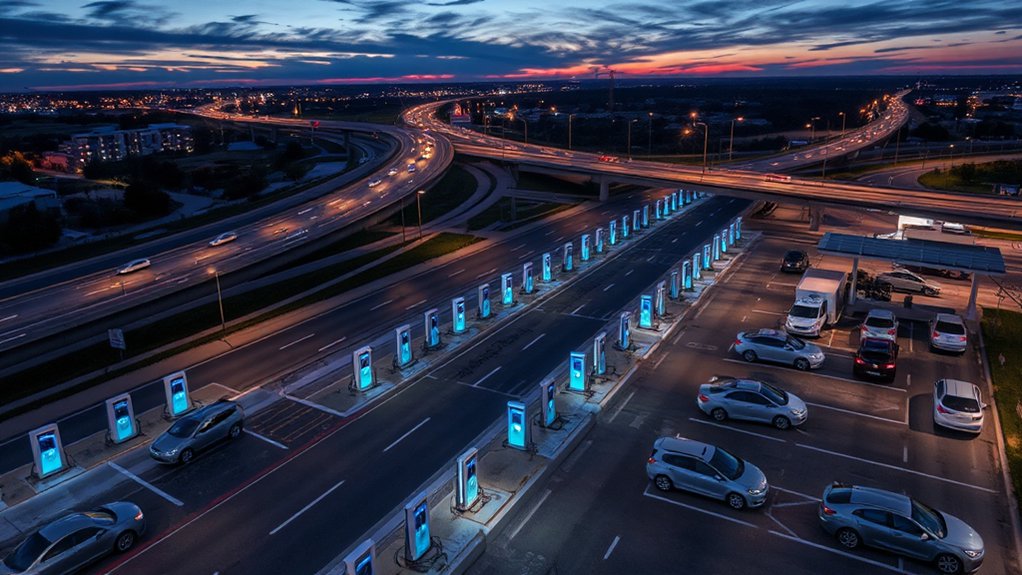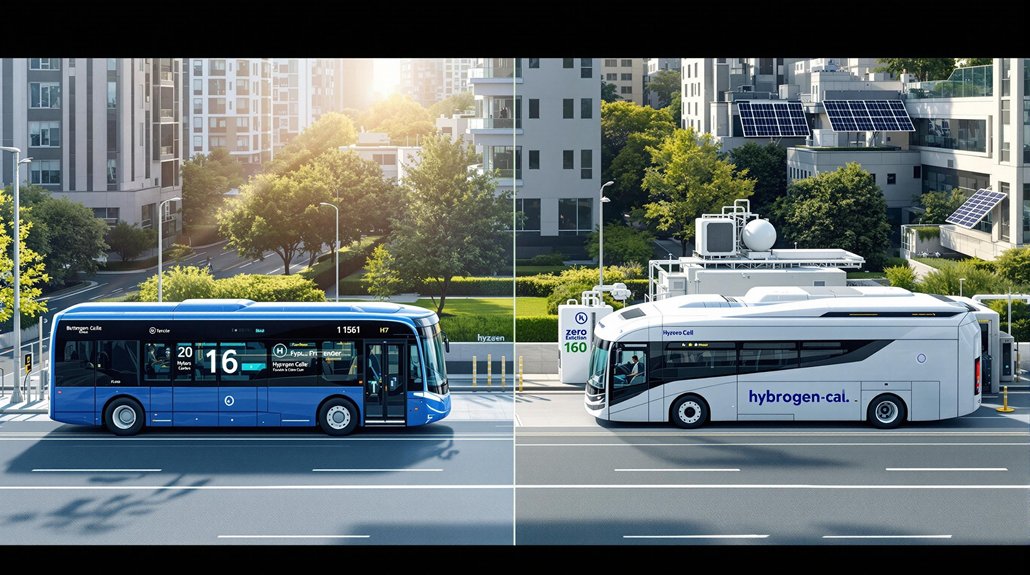California’s charging ahead with 178,549 EV chargers, outpacing gas pumps by a whopping 48%. Electric vehicle sales hit 25.1% in late 2024, with total sales cruising past 2.2 million. Backed by billions in investments, the state’s tackling range anxiety and charger reliability head-on. Tesla dominates sales, but competitors are scrambling to catch up. The Golden State isn’t just talking about an EV revolution—they’re actually plugging it in.
While the rest of the country debates the future of electric vehicles, California has already made its choice. The Golden State has installed a staggering 178,549 public and shared private EV chargers statewide—48% more than gas nozzles. That’s right. Charging spots now outnumber gas pumps. Welcome to the future, folks.
California’s charging network isn’t just big—it’s diverse. There are 162,178 Level 2 chargers for your everyday charging needs and 16,971 fast chargers when you’re in a hurry. Don’t forget the 700,000+ Level 2 chargers quietly powering EVs in single-family homes.
And they’re not slowing down. Over 26,000 chargers appeared since August 2024 alone.
The numbers don’t lie. Californians bought 108,303 zero-emission vehicles in Q4 2024, representing 25.1% of all new vehicle sales. One in four new cars. Electric. The state blew past 2.2 million cumulative EV sales in 2024, with 443,374 new electrics hitting the road that year. The Tesla Model Y continues to dominate sales figures, followed closely by the Model 3, with competing manufacturers struggling to close the gap.
Money talks. California approved a $1.4 billion investment plan for expanding charging and hydrogen networks. The Fast Charge California Project will drop $55 million for new fast-charging stations.
The feds are in the game too, with the Biden-Harris Administration awarding $635 million nationwide for 49 EV infrastructure projects. The Energy Commission recently announced a massive $2.9 billion investment to further expand charging infrastructure and hydrogen refueling options.
Is everything perfect? No. Range anxiety remains real. Charger reliability needs work. And the shift from early adopters to mainstream buyers is happening now—changing the market dynamics completely.
But California isn’t waiting. The state is improving data collection for strategic charger placement, prioritizing shovel-ready projects, establishing reliability standards, and streamlining permits.
They’re targeting hard-to-reach areas and focusing on equity.
While Washington argues policy, California builds. The revolution isn’t coming—it’s already here. And it’s running on electricity.








